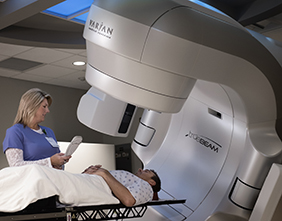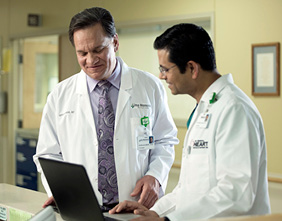Telemedicine – Introducing video medicine technology to advance patient care
posted on: 4/3/2018 1:20:16 PM
Health & Fitness Guest Columnist
Mathew Gaug
Executive Director of Information Technology
Lima Memorial Health System
As technology advances and integrates more directly in the healthcare setting, Information Technology (IT) professionals engage with our clinical staff to create new solutions to streamline and advance patient care delivery. One method that has been making great progress in how clinical care is delivered is with a telemedicine program.
A telemedicine program, in its simplest form, is a process to provide patient care using remote capabilities through secure video, phone and internet connections. A medical provider and a patient using a telemedicine solution can still have a normal office visit, with the ability to see, talk and interact with each other. However, these new programs present opportunities for providers to be able to visit patients without needing to be in the same physical location. While this isn’t an option for every healthcare visit, it does offer numerous advantages in many cases. For example, telemedicine can be used to remove or reduce travel time for a patient to visit a healthcare facility. It can even offer more opportunities for patients to receive medical services that might not have been otherwise available.

Many studies have shown that with a quality telemedicine program, superior results and better health outcomes have been seen when combined with critical-care units. Telemedicine is extremely useful when time is a life-threatening factor. The program can offer our physicians a way to see a patient who is headed to the emergency room or the intensive care unit and give them additional minutes to make decisions where otherwise the patient may have been visually inaccessible to them. Stroke care and other neurological illnesses have also seen great improvements in care with the addition of telemedicine carts.
Telemedicine is also improving the information available in the home health markets. These include new devices to monitor heart ECGs, blood glucose levels and blood pressure readings that can all relay personal results back to the healthcare facilities for better patient monitoring. New advances with activity trackers can also send motion information like number of steps directly into the patient’s online chart. Internet-enabled scales can track weight, body fat ratio and even bone density and will have the ability to safely and securely send that information to clinicians for close monitoring when required.
In today’s information driven society, being able to gather and quickly send health data at any time is becoming a necessity. Combine that with new video and remote medical diagnostic capabilities and the world of telemedicine could soon become more of a normal way of receiving health care. Enabling our patients and clinicians with easier access to information to make better healthcare decisions is one of our primary goals in Healthcare IT.
Using technology as a solution to providing better health care has been one of the more polarizing and complex issues to our clinical and patient communities. It should never be the intention to just have a new gadget for the sake of wanting something new, especially when it comes to health care. But when new ideas drive the technology to help improve on real world problems, to create a better outcome for people in their times of need, that is when being in the IT field within health care is the most rewarding.
Originally published in The Lima News Health and Fitness section.
Website






